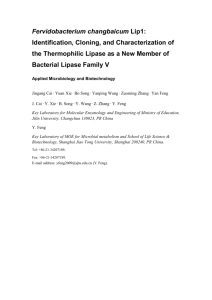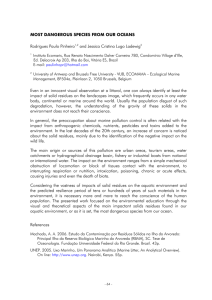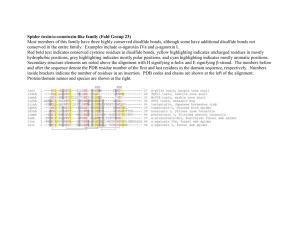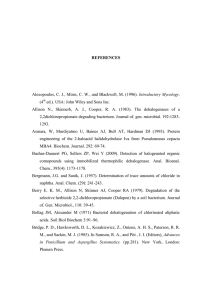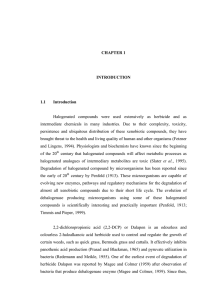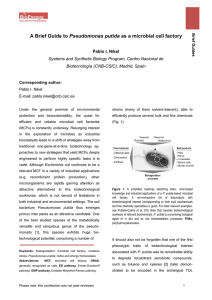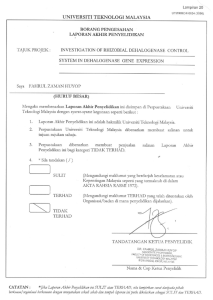D-specific dehalogenases, a review Abstract
advertisement
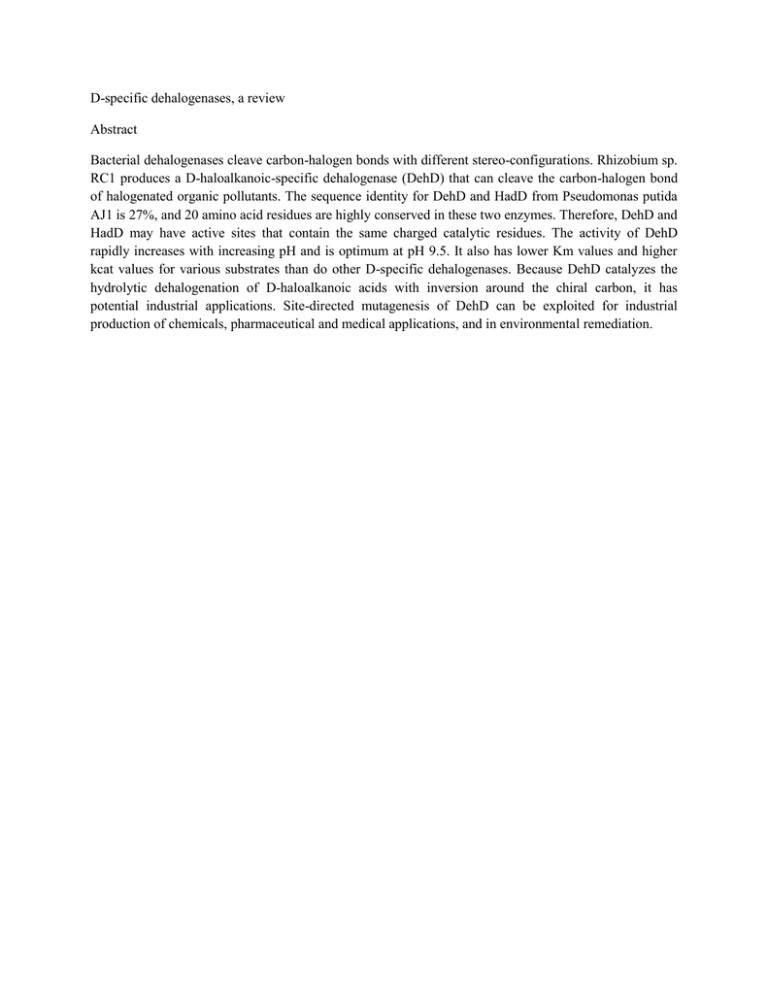
D-specific dehalogenases, a review Abstract Bacterial dehalogenases cleave carbon-halogen bonds with different stereo-configurations. Rhizobium sp. RC1 produces a D-haloalkanoic-specific dehalogenase (DehD) that can cleave the carbon-halogen bond of halogenated organic pollutants. The sequence identity for DehD and HadD from Pseudomonas putida AJ1 is 27%, and 20 amino acid residues are highly conserved in these two enzymes. Therefore, DehD and HadD may have active sites that contain the same charged catalytic residues. The activity of DehD rapidly increases with increasing pH and is optimum at pH 9.5. It also has lower Km values and higher kcat values for various substrates than do other D-specific dehalogenases. Because DehD catalyzes the hydrolytic dehalogenation of D-haloalkanoic acids with inversion around the chiral carbon, it has potential industrial applications. Site-directed mutagenesis of DehD can be exploited for industrial production of chemicals, pharmaceutical and medical applications, and in environmental remediation.



